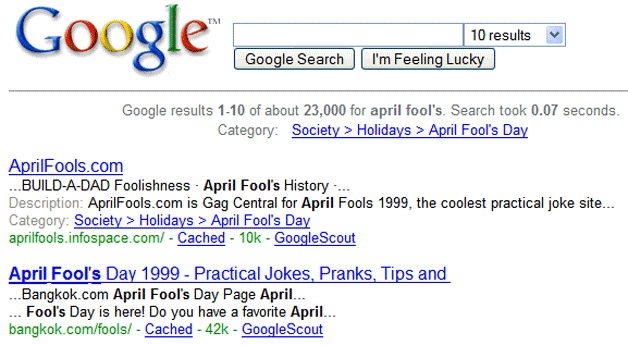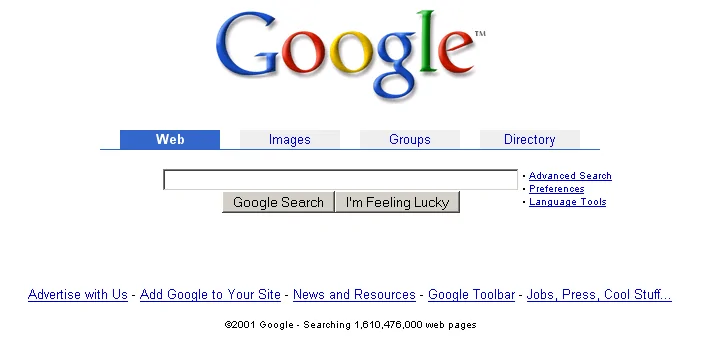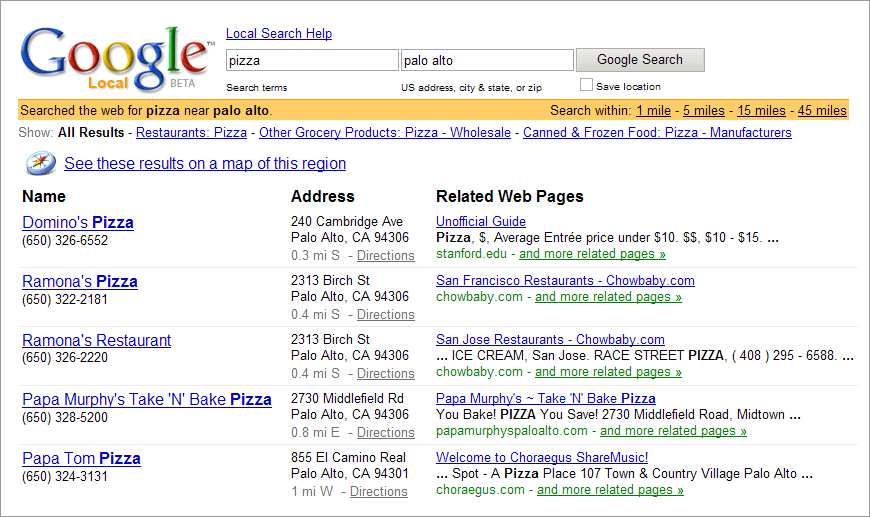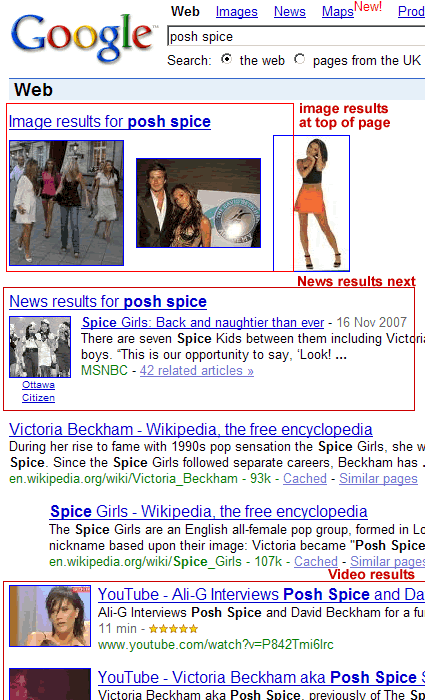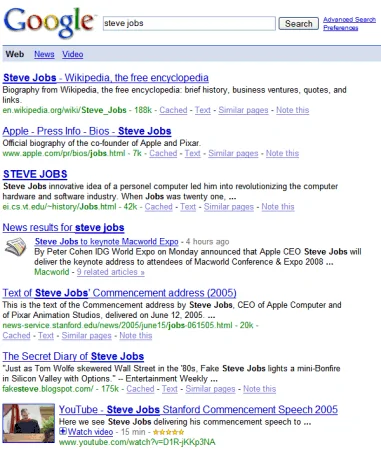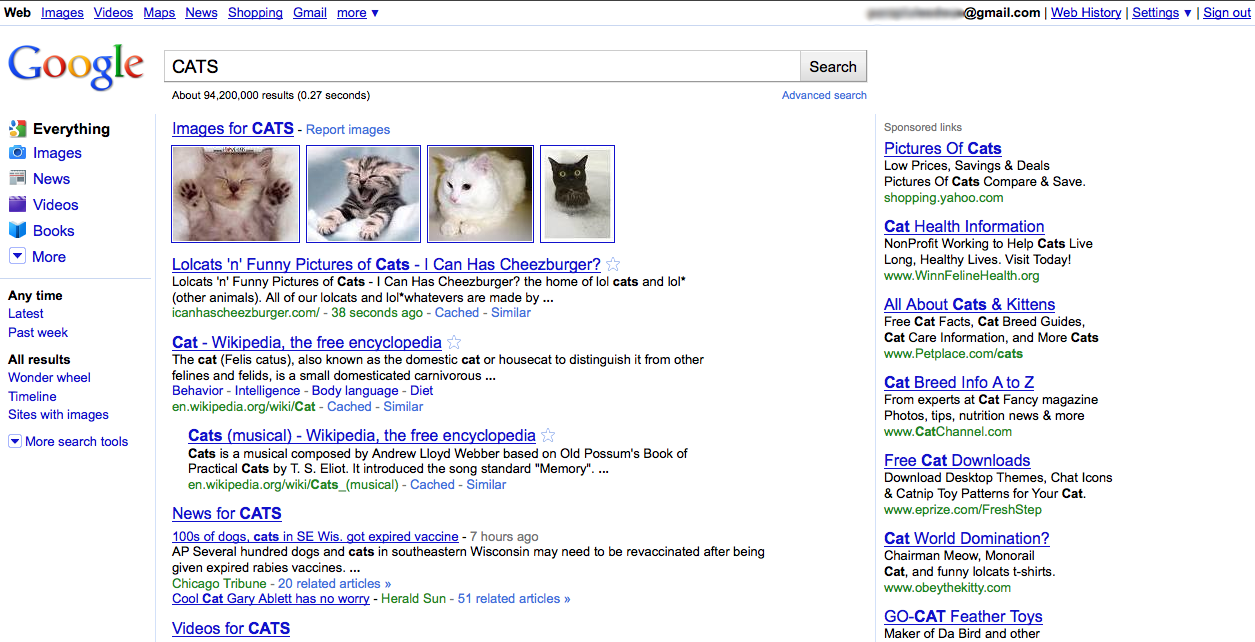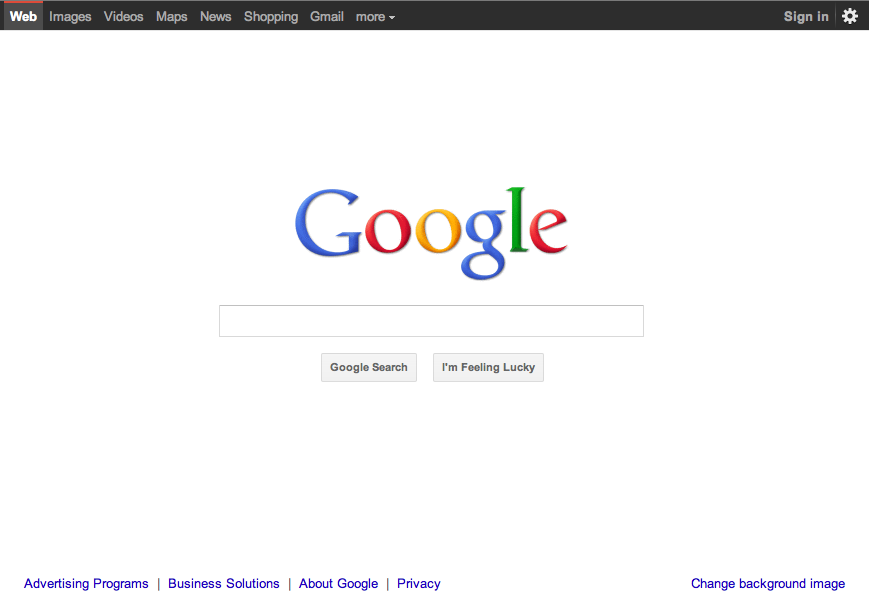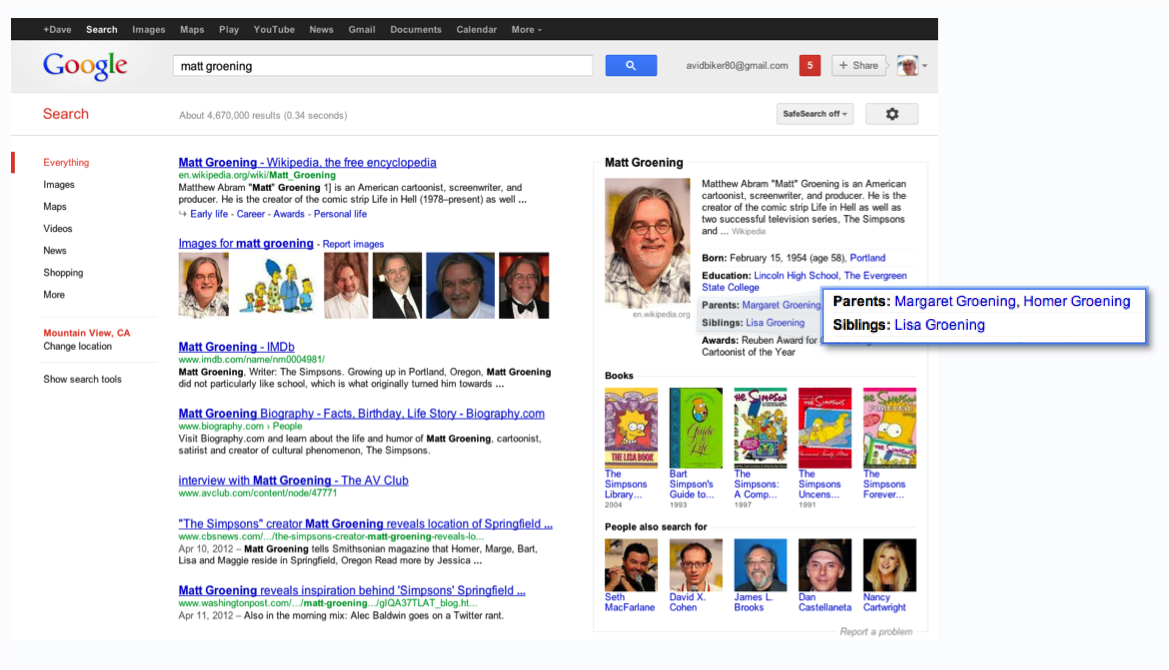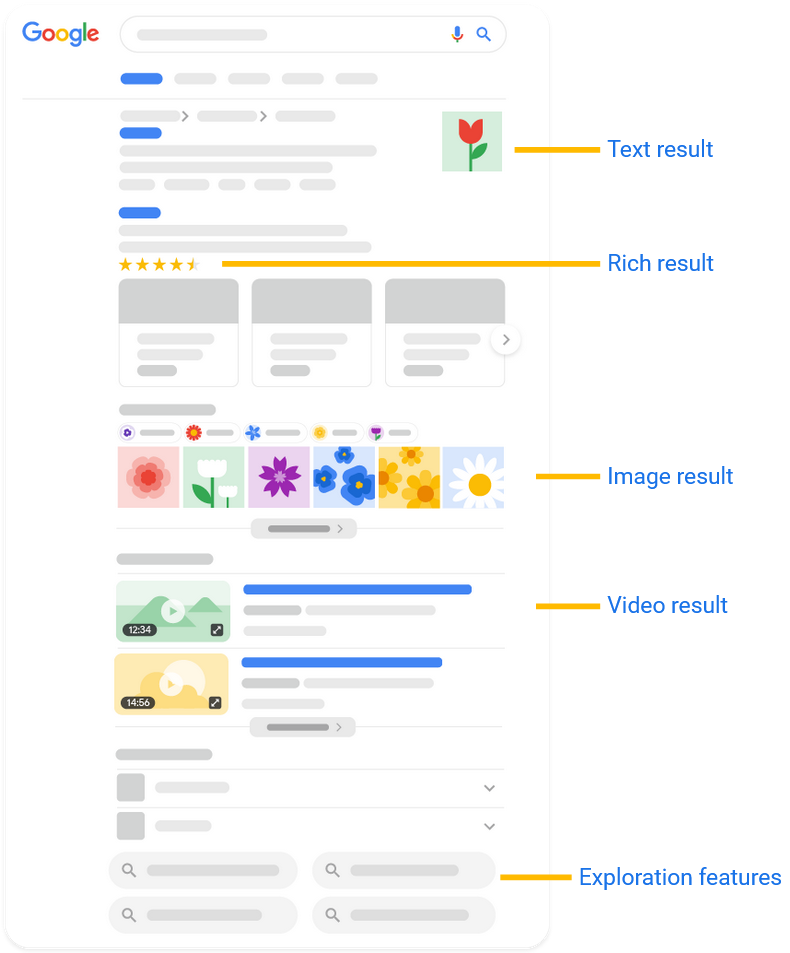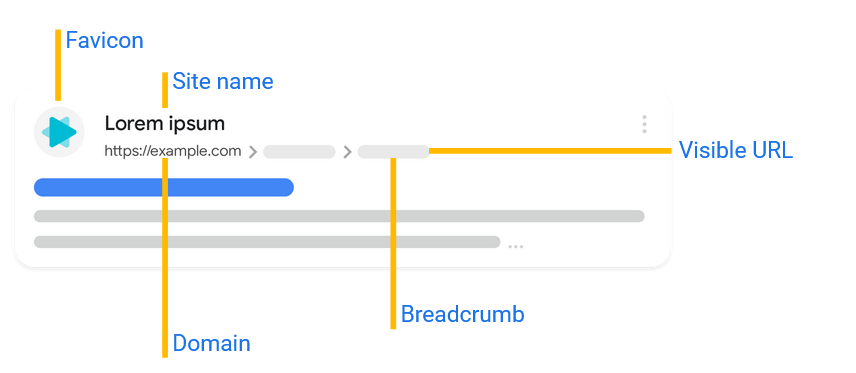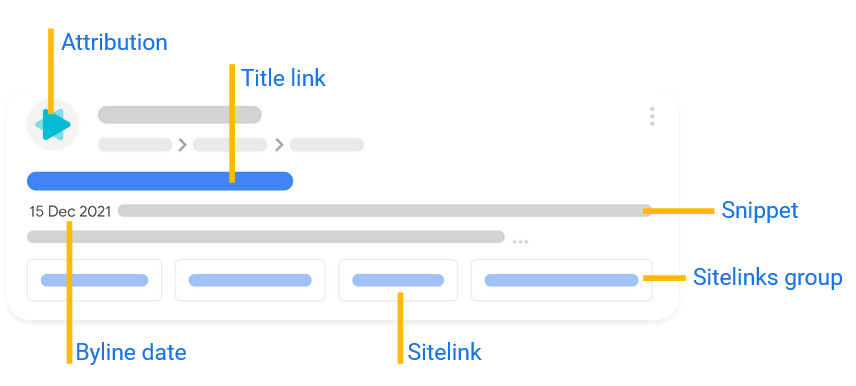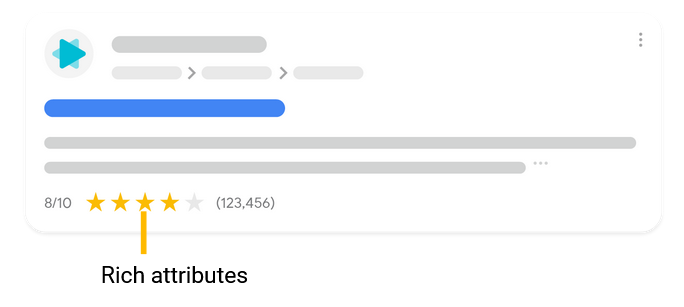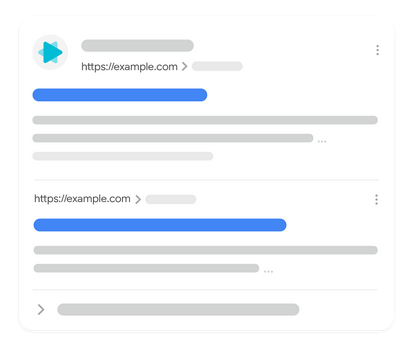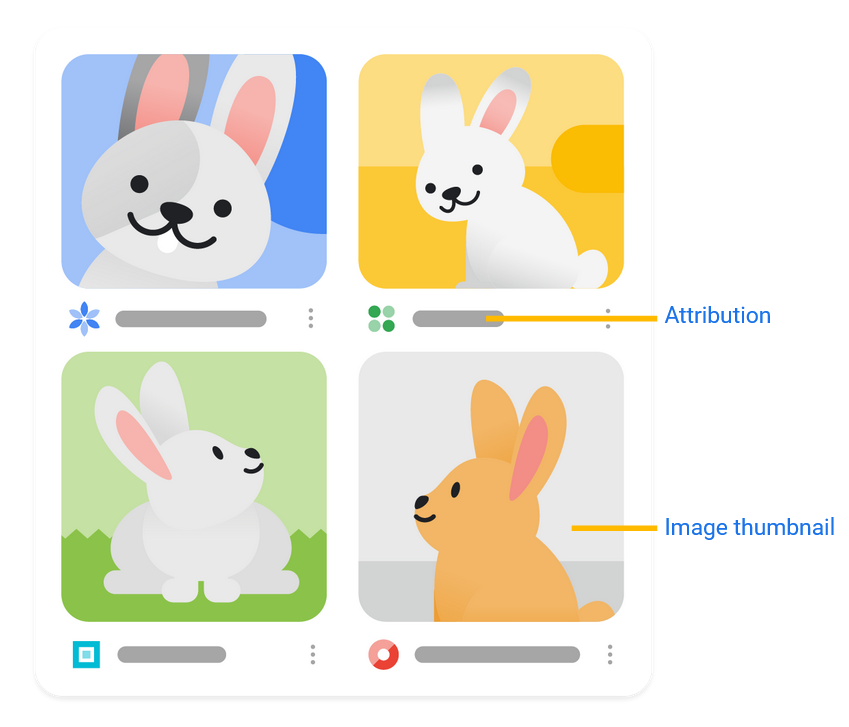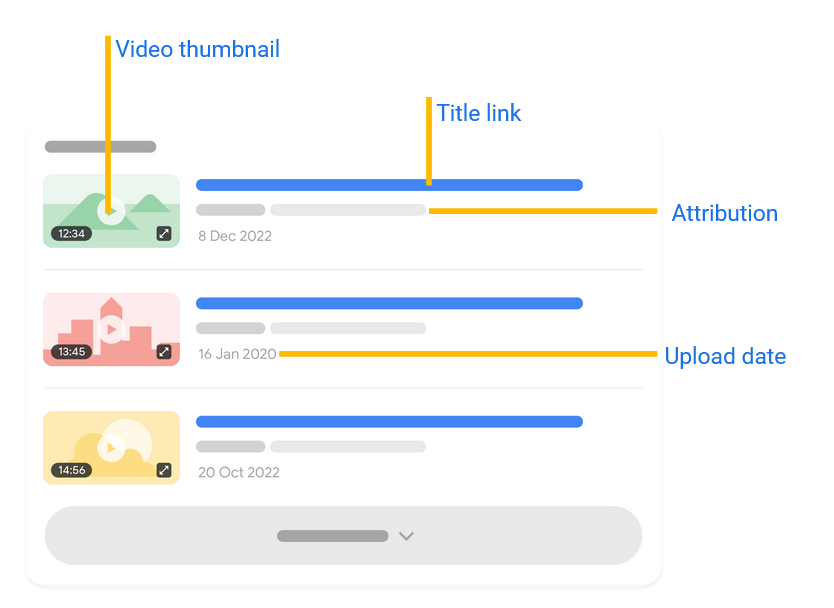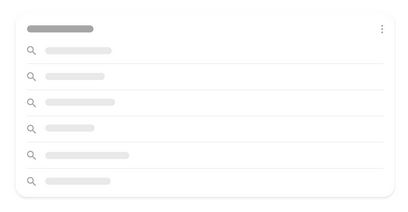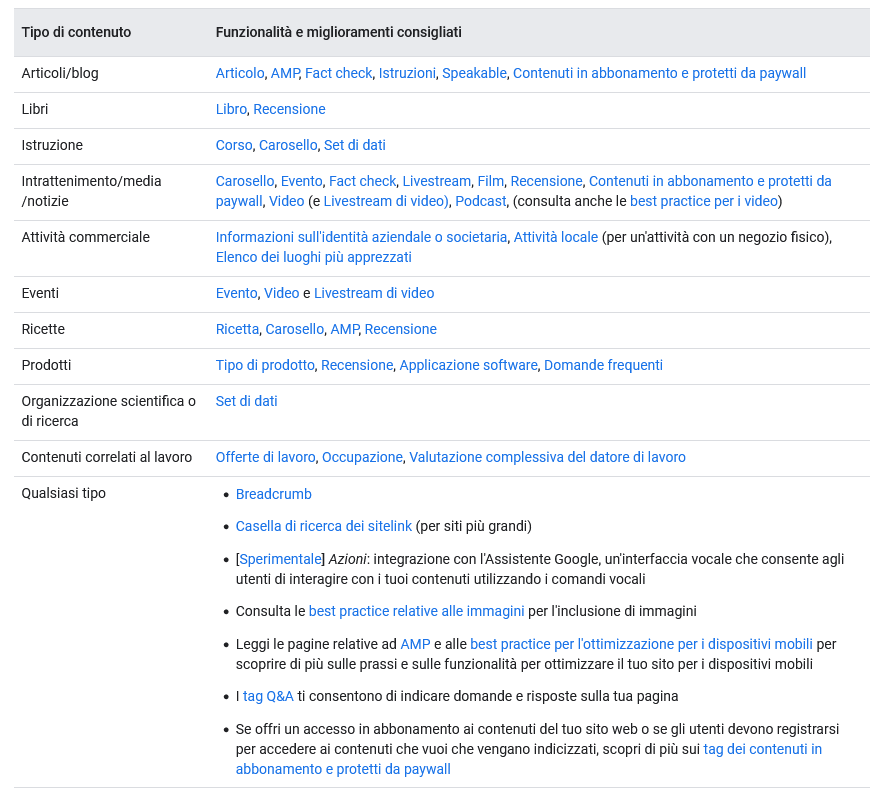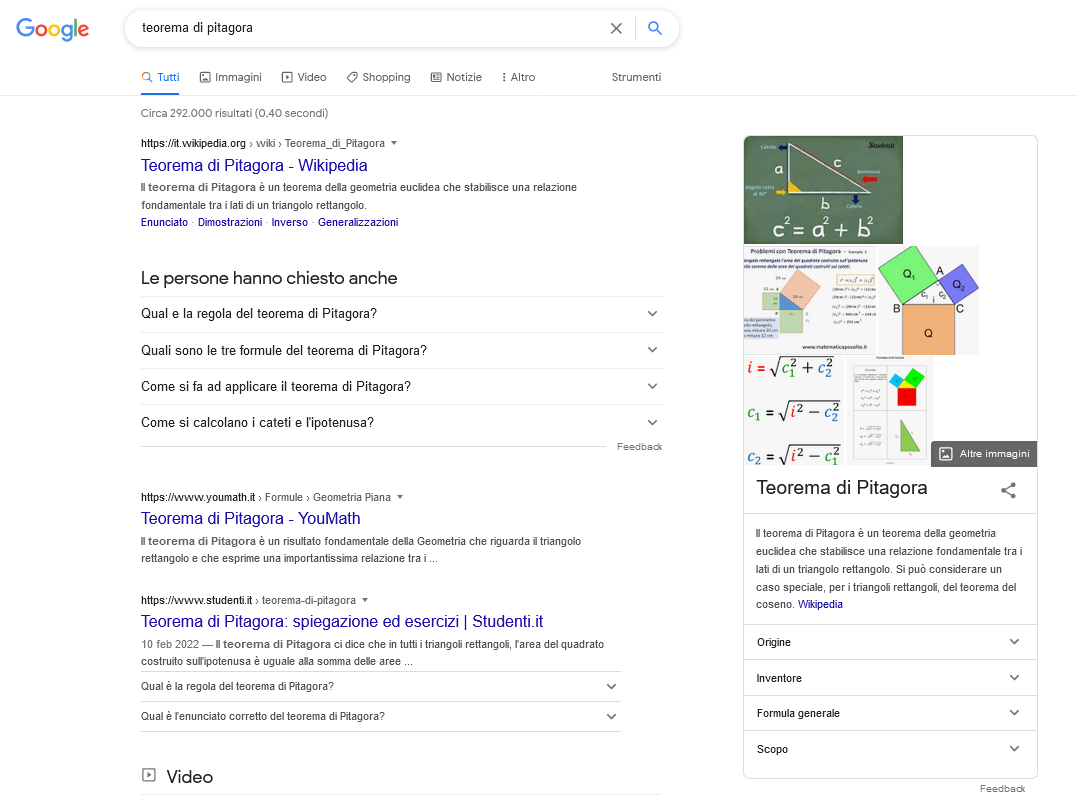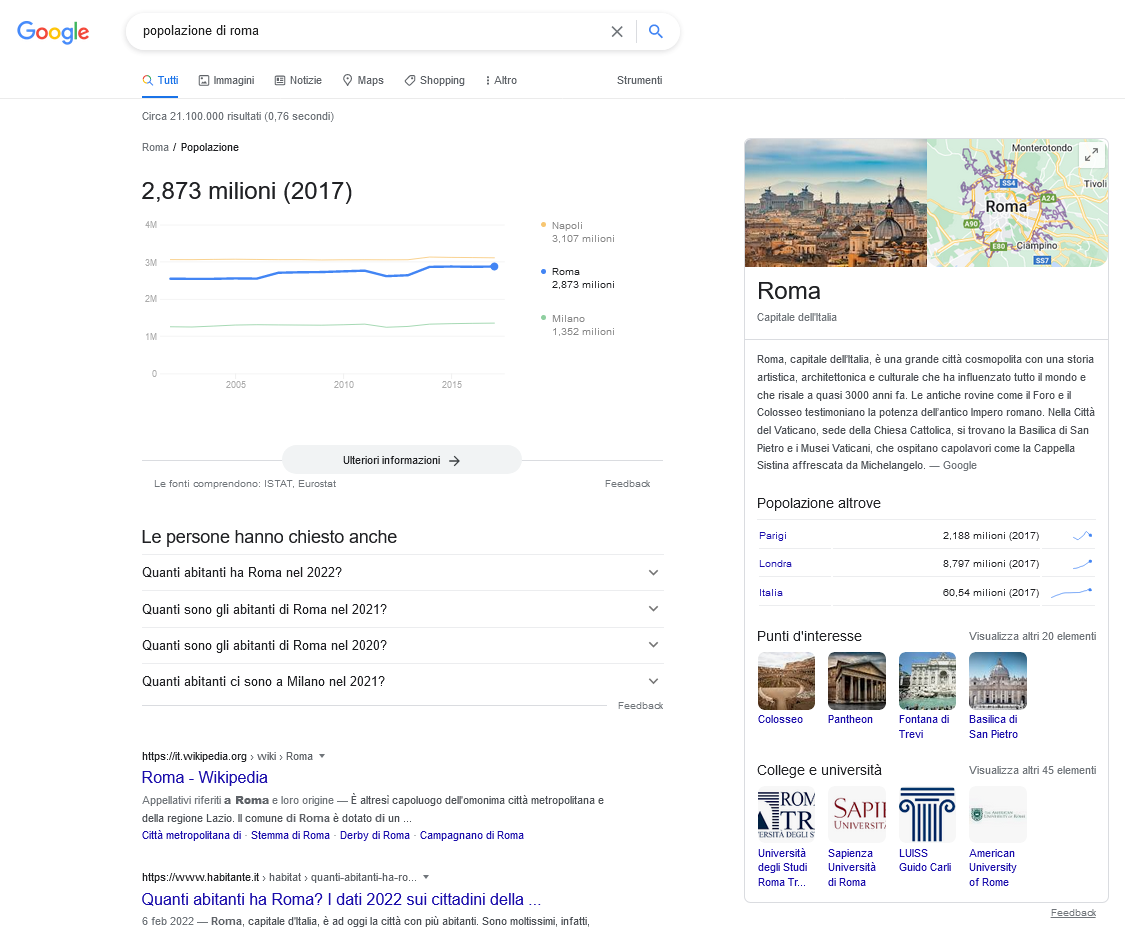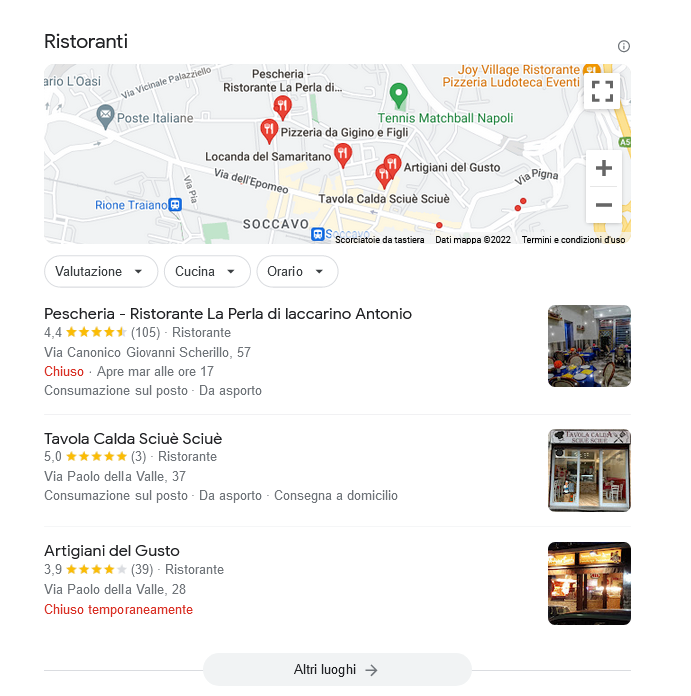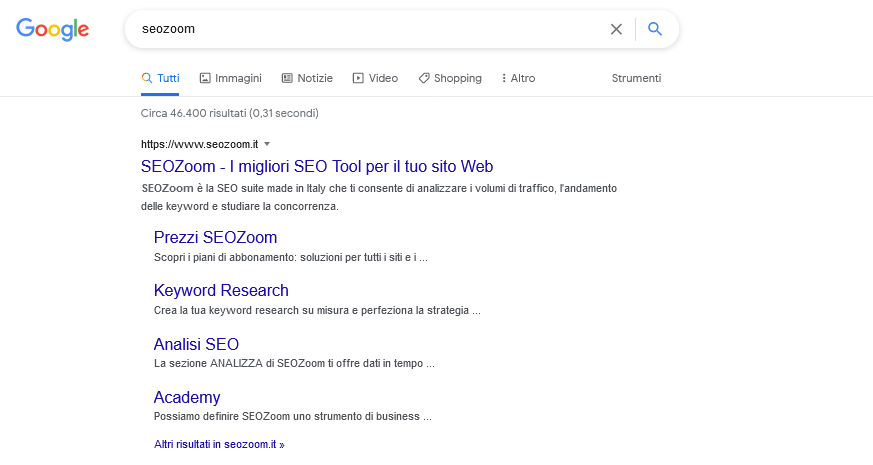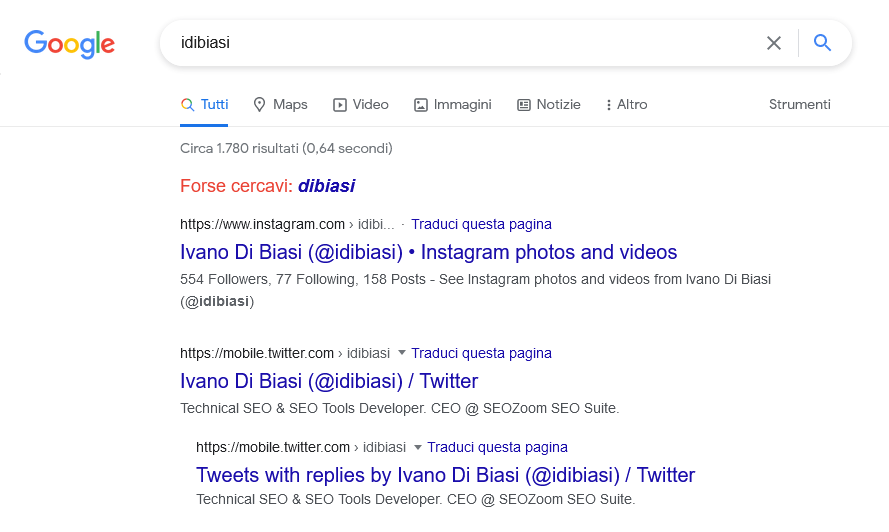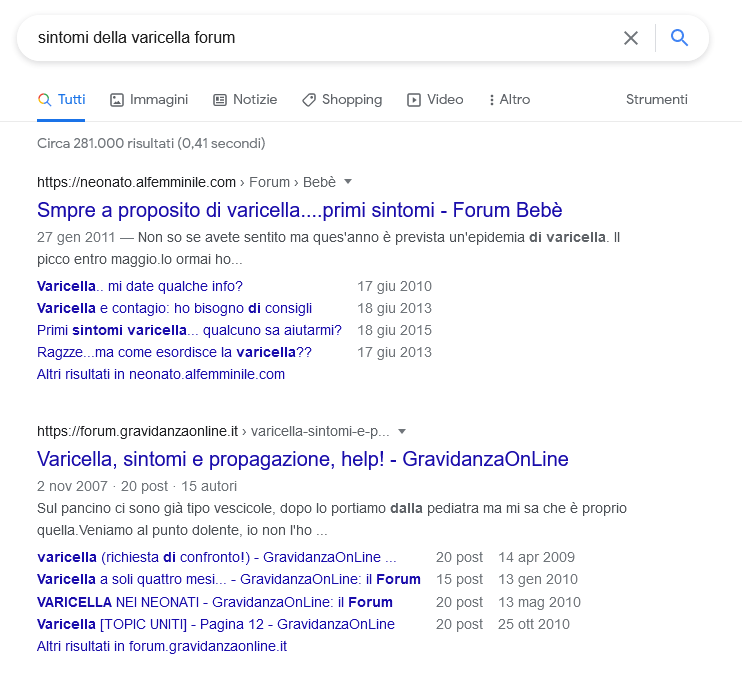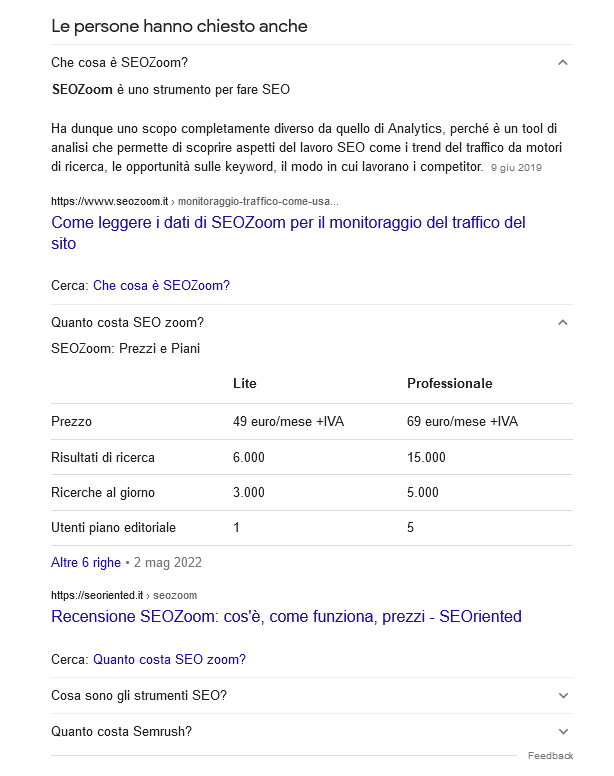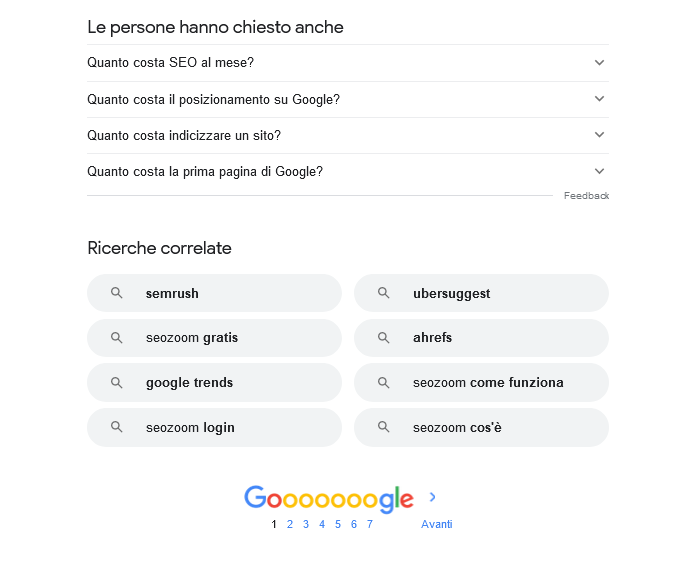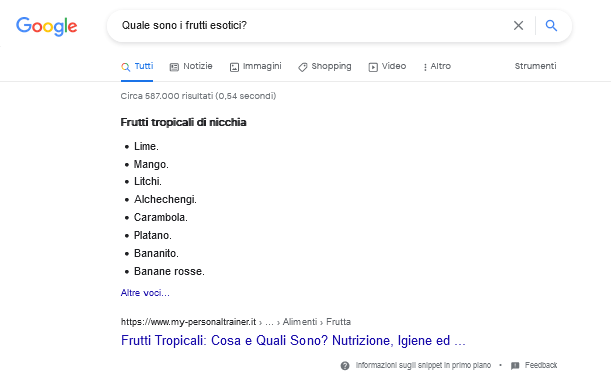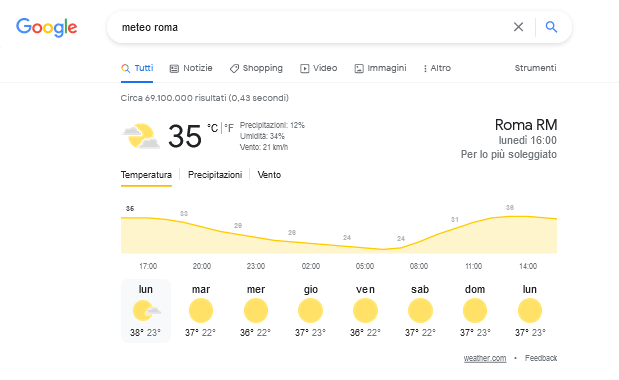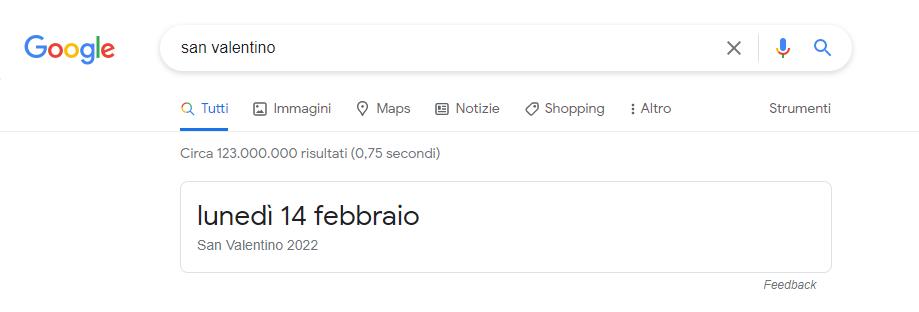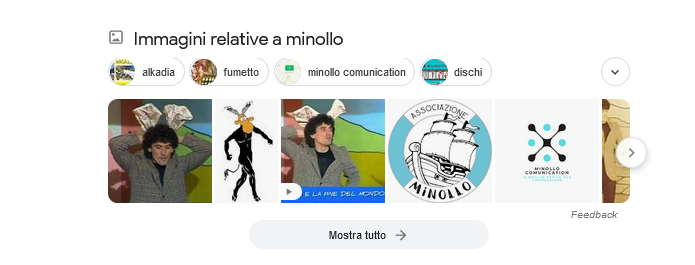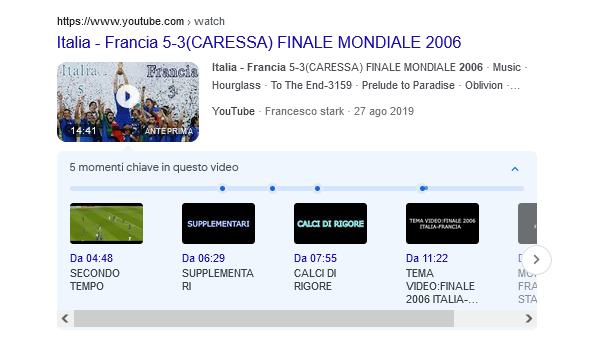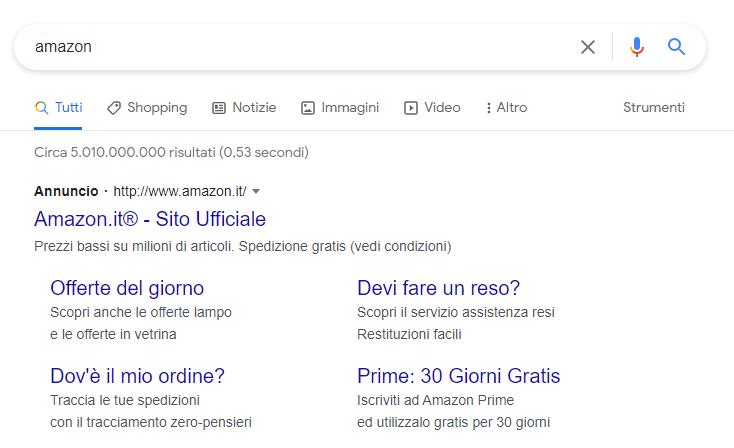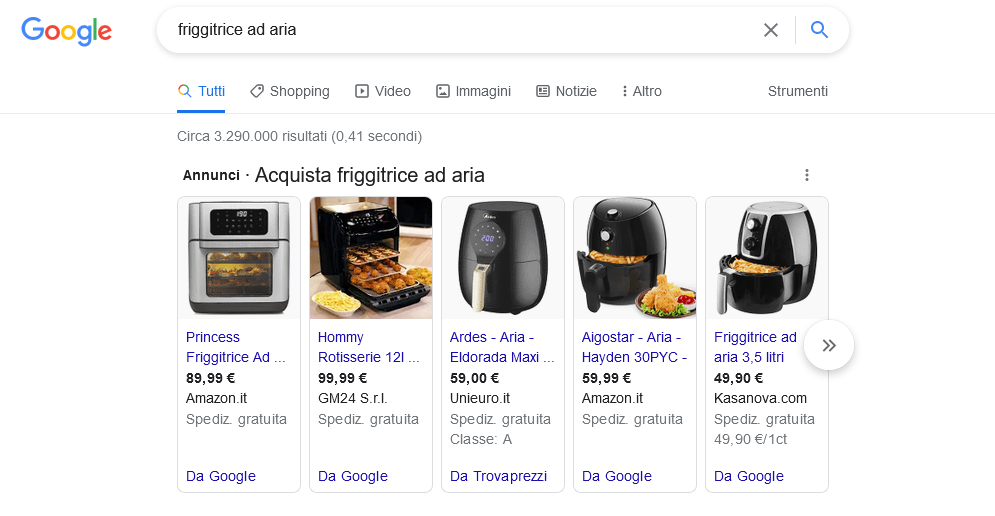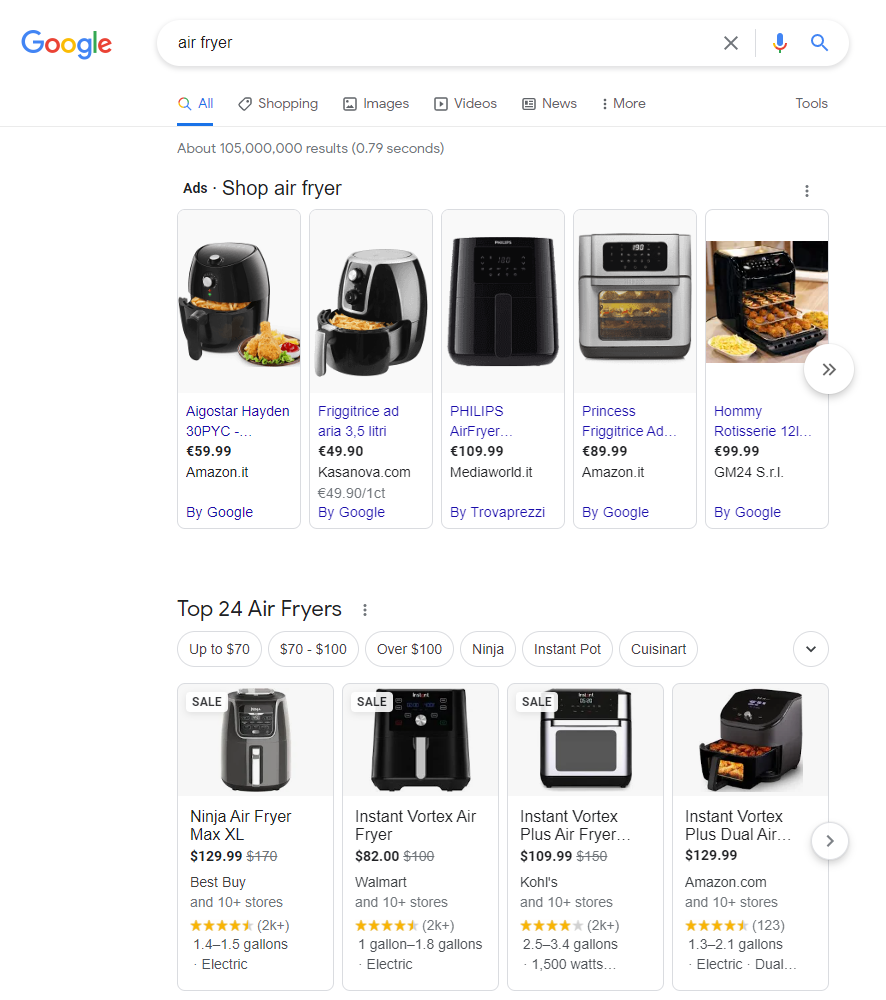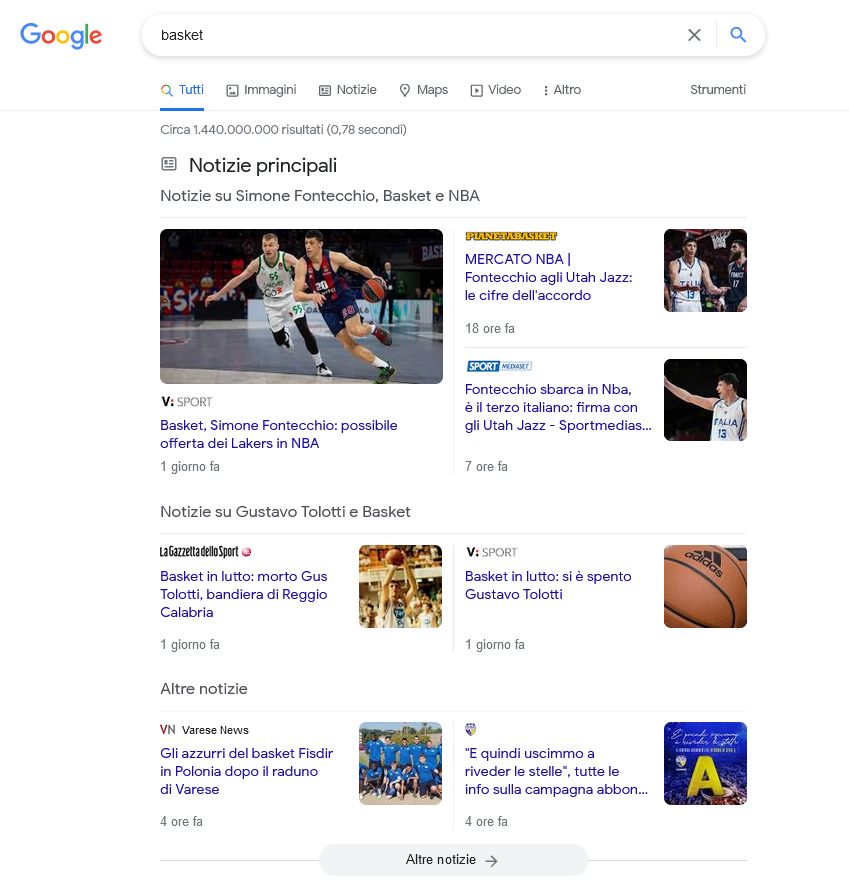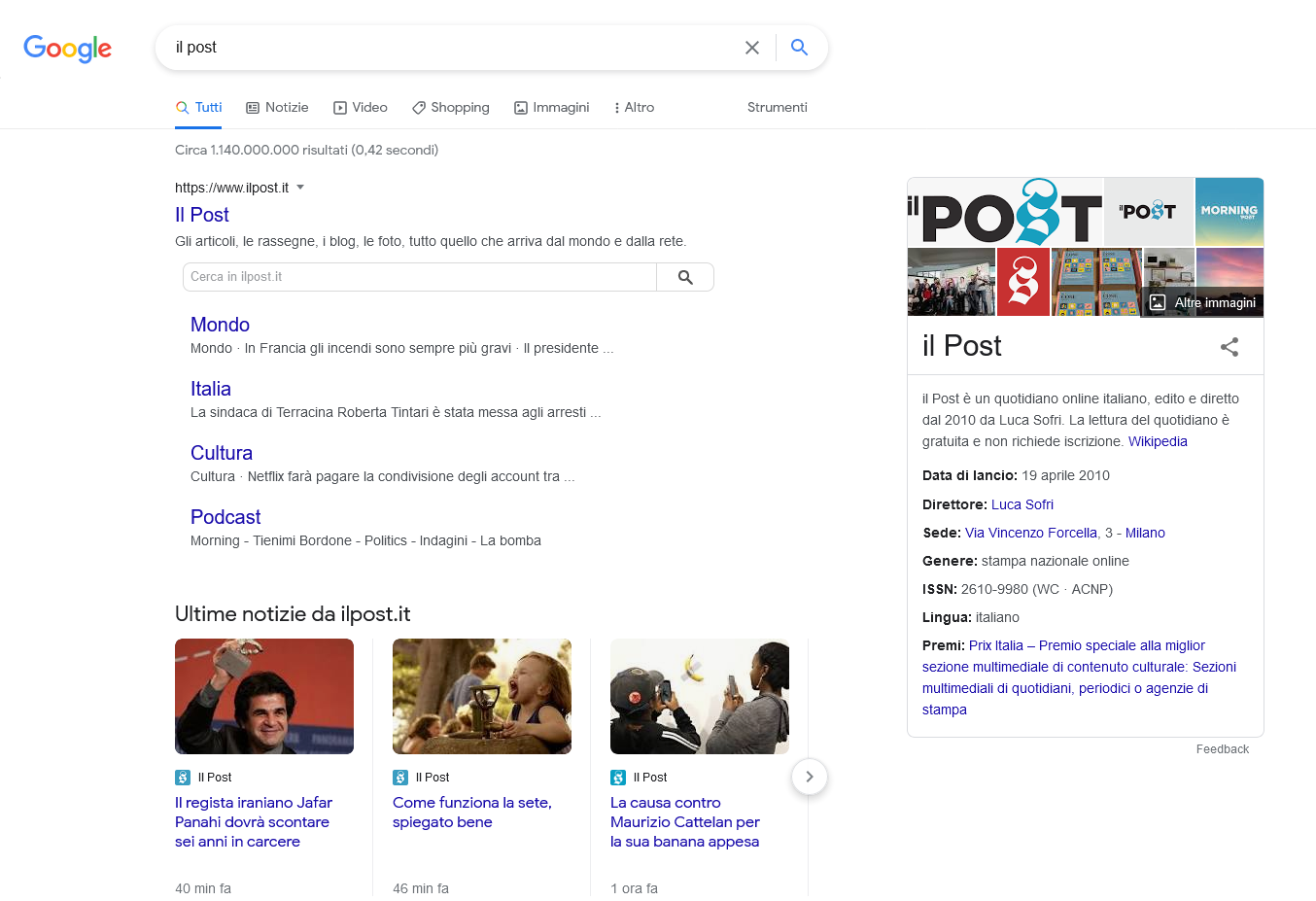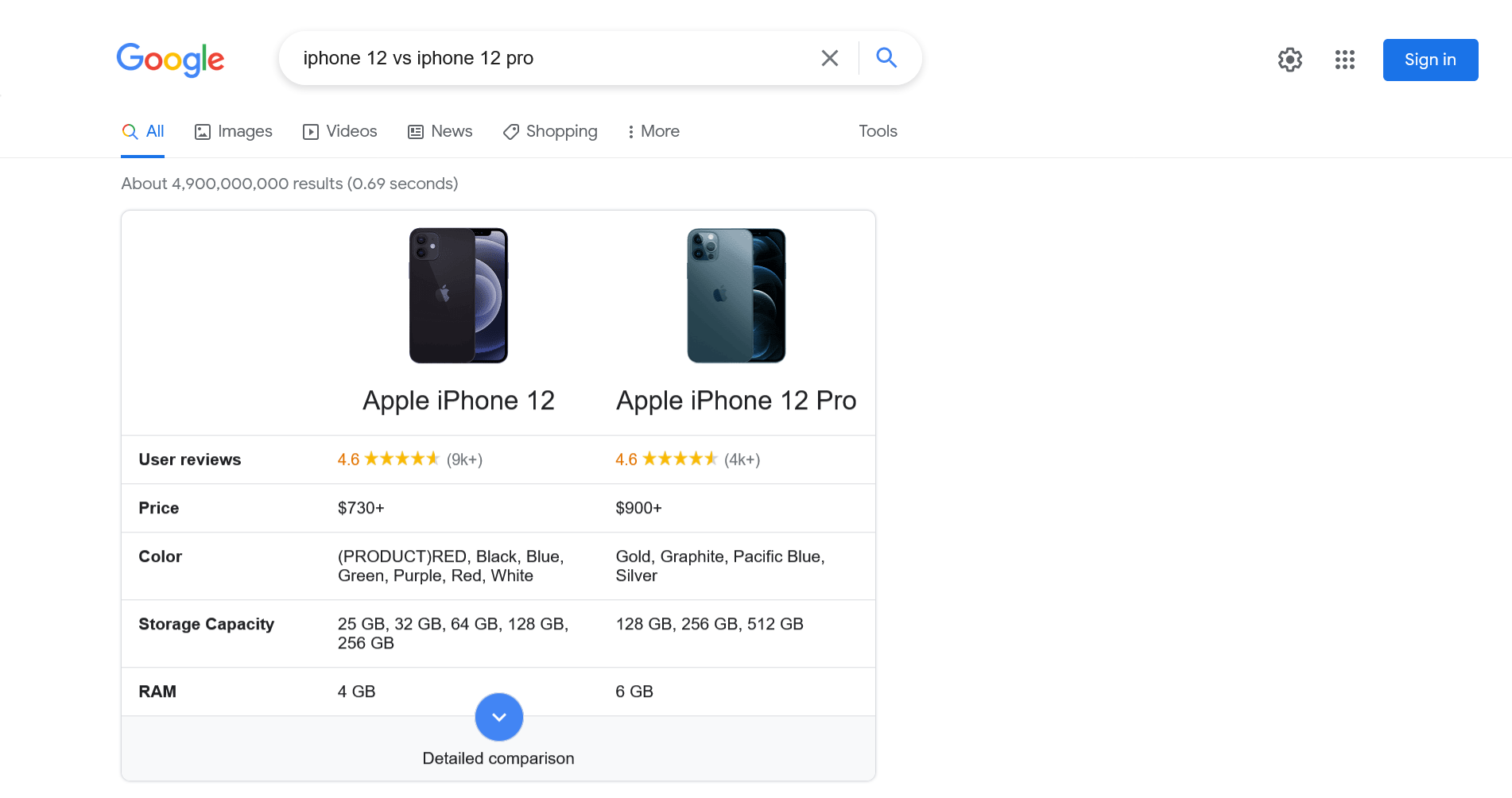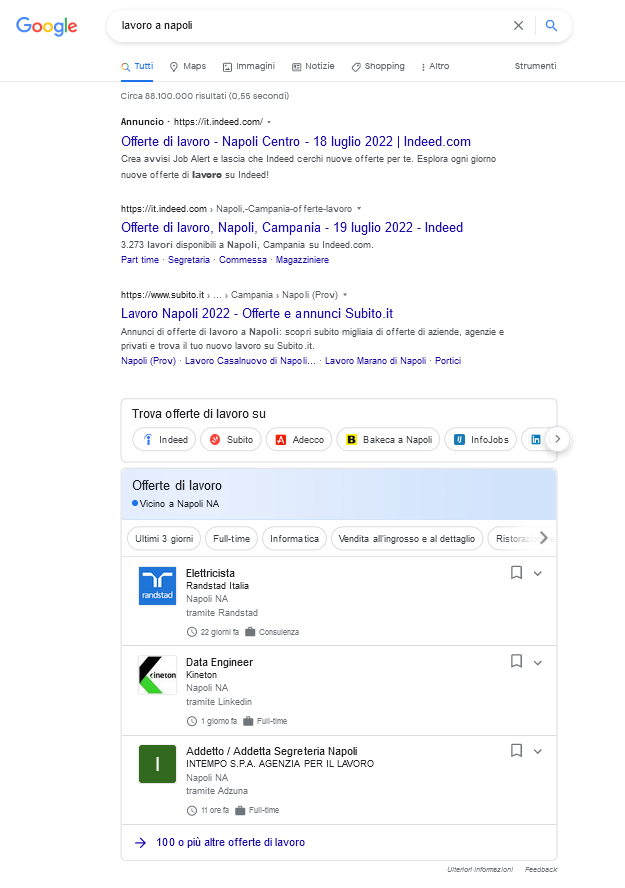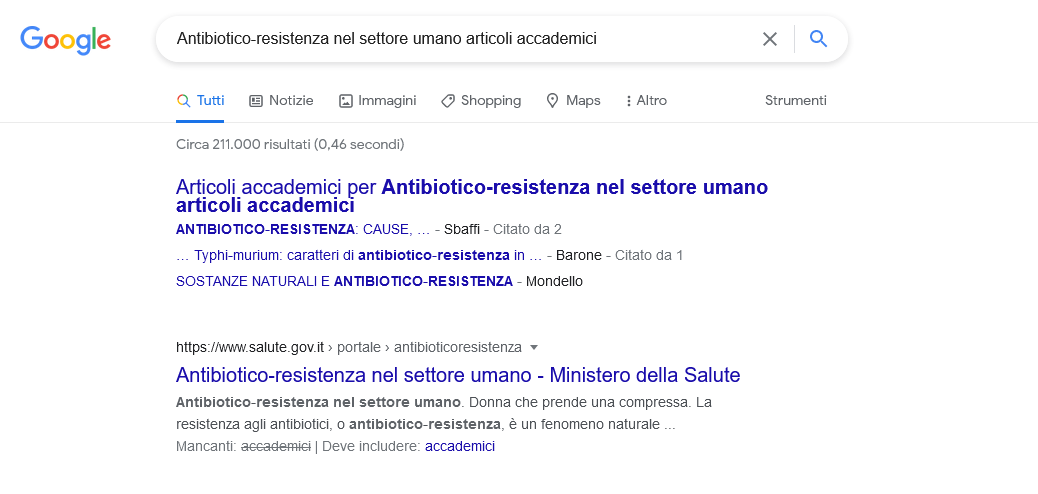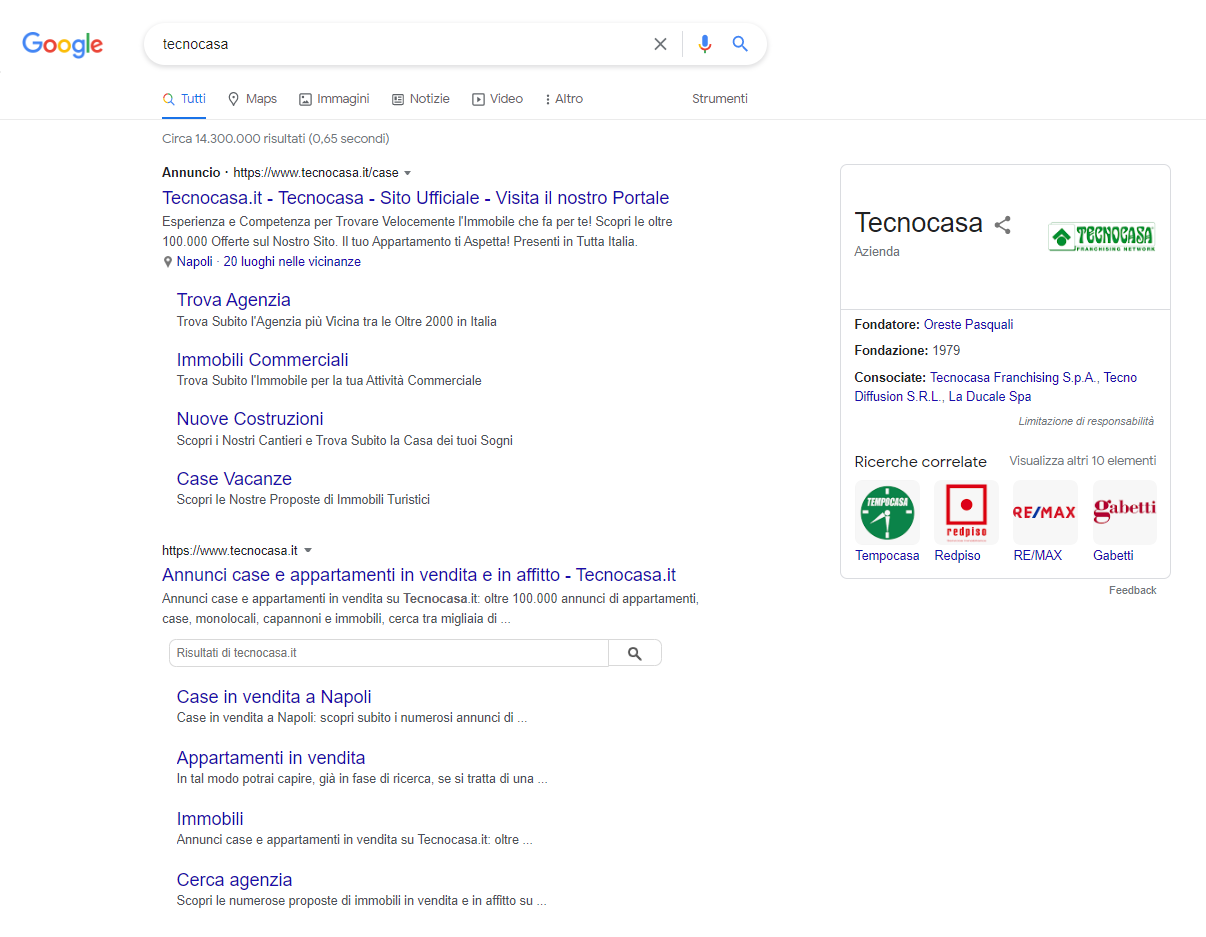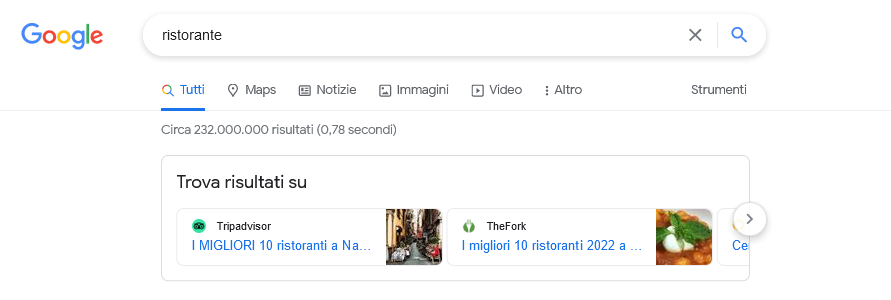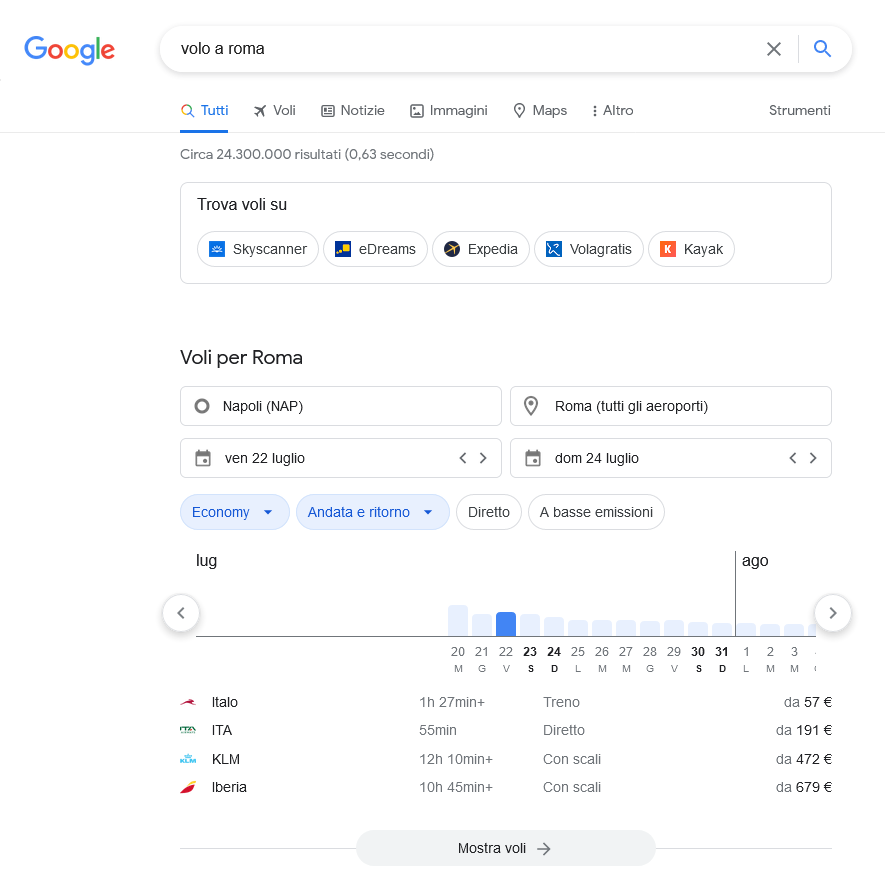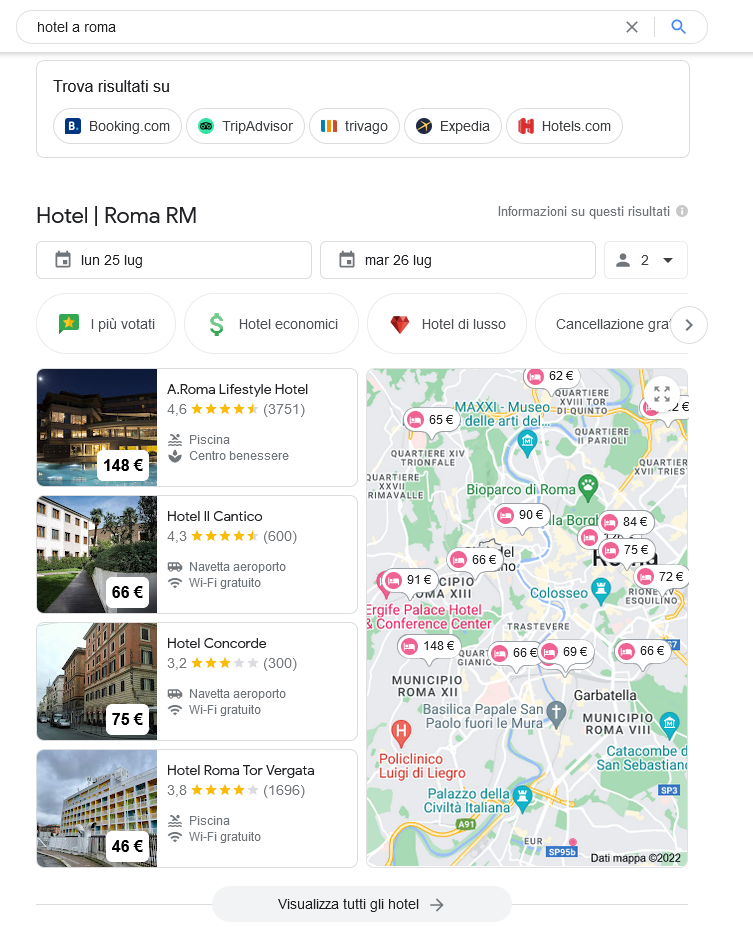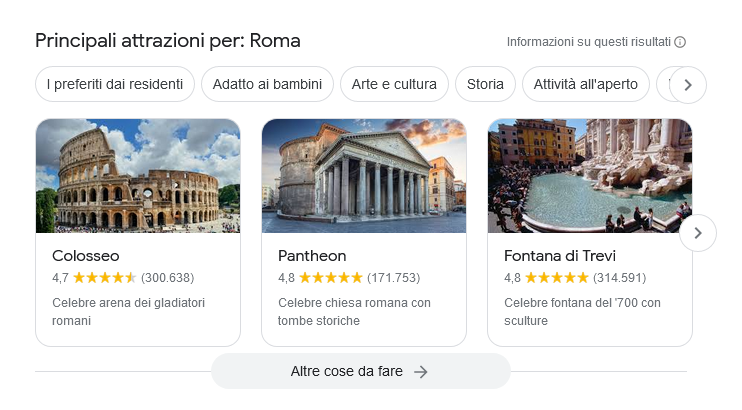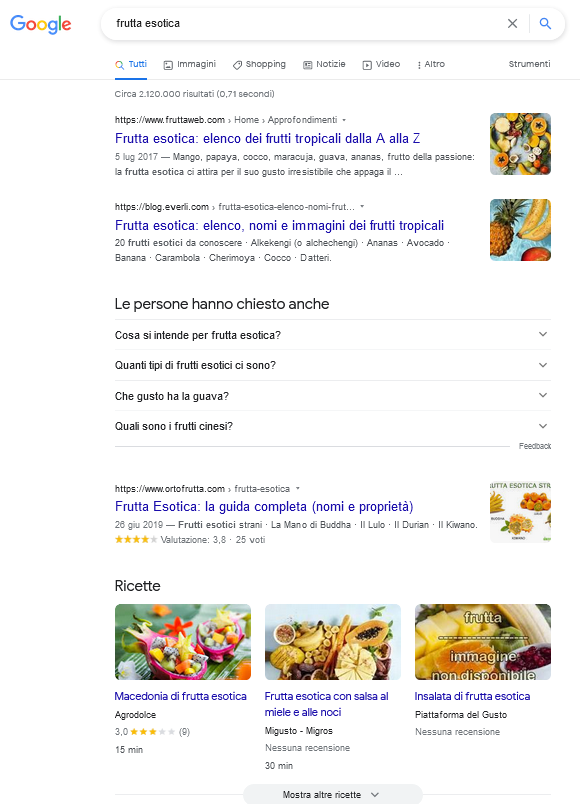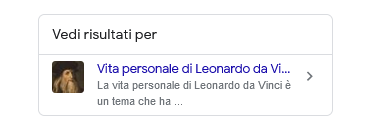Links, features, boxes and so much more: a guide to today Google SERPs
SERP stands for Search Engine Results Page: although there are billions of web pages online, none perhaps takes on more value for digital marketing and SEO than Google’s SERPs, the results page that the search engine offers in response to a user’s query. And while originally the SERP consisted only of the canonical 10 blue links, over time Google’s results page has been enriched to now display a plethora of boxes, features and various elements that have revolutionized its aesthetics and usability with a view to tailoring the SERP to the user’s true search intention, personalizing their experience to maximize their satisfaction.
What are SERPs
SERPs, the Search Engine Results Pages, are thus “simple” Web pages that each search engine provides in response to users who search for something online and generally enter their search query (often using specific terms and phrases known as keywords) in the appropriate box or browser bar (or voice commands, another growing trend).
Each SERP is unique and different: while it is quite intuitable that we will not get the same page if we launch an identical search on different search engines (because each search engine builds the SERP in its own way and evaluates the results according to its own criteria and algorithms), even if we do the same search (using the same keywords or queries) on one search engine we may notice variations, however slight. This is because virtually all search engines customize the experience for their users by presenting results based on a wide range of factors in addition to search terms, such as the user’s physical location, browsing history, and social settings, so as to offer their users a more intuitive and responsive experience.
In addition, the structural appearance of search engine results pages is also constantly changing due to experiments conducted by Google, Bing, and other search engines, often in the wake of emerging and rapidly developing technologies in this area, and thus the SERPs of today differ significantly in appearance from those of a few years (sometimes months) ago.
Why SERPs are important (and why it is important to know them)
Beyond the huge differences between search engines, almost all SERPs today offer (at least) two types of content: “organic” results and paid results.
The former are the result of organic search, and thus lists of web pages ranked on the basis of the criteria followed by the search engine’s algorithm: these are the links that are of interest to SEO activity, the classic positions for which you battle to the sound of optimization in search of visibility.
In contrast to organic links, paid results are shown when there actually has been a payment by an advertiser, who buys a space to display their ad. In the past, paid results were almost exclusively limited to small text ads, usually displayed above or to the right of organic results, but today they can take on a wide range of ad formats to meet advertisers’ needs and win users’ interest and clicks.
The SERPs therefore interest (and are important for) both SEO specialists and PPC advertisers, who strive to conquer what in English is called SERP real estate, i.e. to consolidate their property in the results page and gain valuable space in the most important parts of the page; competition is fierce and technological developments in search, however, impose the need to keep up with the evolutions, aware of how search works and what are the obstacles and features that can diminish the visibility of the results and sometimes make even a first organic position useless.
Any site that has Google ranking as its core business cannot, therefore, neglect the optimal management of all aspects related to these additional features to the classic organic results, starting with the implementation of structured data, a central element of this progressive revolution, because only awareness can help us understand what is the aspect on which it is convenient to focus the strategy and try to work.
Google SERPs, history and evolution
However, it is clear that, of all the page results, the ones we are most interested in are the Google SERPs – if only because Mountain View’s search engine monopolizes the industry, used by almost 92 percent of Web users worldwide and 94.5 percent of Italian surfers (July 2022 data).
The difference between a Google SERP of the late 1990s (but also those of the early 2000s) and one of today is abysmal, and we need only look at this image (Google SERPs in 1998, the year the search engine debuted) to realize this.
Google’s initial purpose was to replace the primitive purely text-based search engines, such as Altavista and Yahoo, and provide more relevant results by adding advertisements through which to monetize and make money.
To differentiate itself from its competitors and surpass them, it was necessary to focus on a better service, and time told that the project (initially called “BackRub”) developed by Larry Page and Sergey Brin and officially launched in 1998 met its challenge, quickly becoming the most widely used web-based search engine in the world. The insight that enabled this very rapid rise was to create SERPs not by simply checking the frequency with which certain search terms appeared on Web pages (precise correspondence between query set by the user and keyword in the text, as virtually all competitors did), but the relevance of a page estimated through the relationships between various sites, and mainly through the quality and quantity of links. In other words, since its origins Google has exploited the PageRank system, a true index of a site’s popularity on the Web, determined by the number of backlinks received from other sites interpreted as “votes” of trust and liking, which in turn had different weights based on the value of the linking site and its popularity-as we know, PageRank today is still part of Google’s ranking factors, but it is “just one of many” systems used to rank pages.
In any case, at least until the year Two Thousand, Google did not offer a particularly original SERP: each user query returned 10 blue links, pointing to as many search pages selected and ranked according to the criteria of Big G’s algorithm. Precisely in the year Two Thousand, however, there is a first major revolution in the results page, because the Google Adwords program, an advertising platform that allows businesses of all types and sizes to promote themselves on the search engine, starts, and that practically introduces paid results within the SERPs in the form of text ads relevant to the query (initially only at the top and to the right of the organic results – all images in this section are taken from Advia).
Another noticeable change to Google’s SERP came in 2001, with the birth of Google Images (a parallel search engine for image-only searches) first and then with the introduction of a tabbed interface at the top of the search bar, giving the ability to search the Web, images, groups, or directories.
In addition, at this stage (and until removal in 2006) at the bottom of Google’s home page also appears the number of Web pages in its search index, which exceeds one billion as early as 2000. Around the same time, between 2001 and 2002, Search was enriched with other sections and functions: after the events of September 11, for example, the News began to be distinguished, which would later merge into what we still know today as Google News, while technological evolutions made it possible to experiment with a system of automatic correction of the query typed by users. Curious is another experiment, leading to the sudden appearance of Froogle, a search engine dedicated to product shopping and commercial searches for tangible goods, which functioned for a few years as a stand-alone search engine before being retired in 2007 and relaunched as Google Product Search, which then recently became Google Shopping, a search feature integrated into Google’s main engine.
Between 2000 and 2004, the search engine continued to grow (and Google Doodles and easter eggs began to appear) and major changes came to Google SERPs, including online local listings and All Results. Local directories (Google local) were introduced to help users find results related to their areas, while the “All Results” tab allowed users to search for a variety of search result options, complementing the possibilities available to them.
In 2007, this feature is permanently integrated into the main engine, and Google introduces universal search, which combines all previously separate elements into a holistic search experience, available directly Google on the main search results page: By typing in the query, the user can now get in response a SERP containing different types of results, such as links to web pages, images, videos, news, books, patents, and more, thus filling the classic search results page with additional elements to the classic organic blue links, such as news (Google News articles), Images (Carousel of previews from Google Images at the top of the page), and so on.
Continuing our quick overview of the history of Google and its SERPs, we recall in 2010 the attempt to “widen” the display with the creation of a sidebar on the right side of the page, dedicated mostly to sponsored ads and introduced to take advantage of computer screens that had grown larger and often left empty space along the left and right edges.
Since 2011, we have been seeing a new acceleration, including a technological one: the ability to do a reverse image search appears, Google Instant is perfected (which basically suggests keywords while typing the query and precisely triggers searches instantaneously, in real time), and most importantly, the search engine’s new home page debuts, which is much more minimal and accessible. Little curiosity: as seen in the image below, there is still the I’m Feeling Lucky box, which essentially allowed users to ignore exhausting ads and skip SERPs to go directly to the website of the first search result. Although not many users used this button, legend has it that Google eliminated it because of the large financial losses it caused (because it did not bring up SERPs and ADSs), and today clicking on that button takes you to an archive of Doodles.
Even more important is the introduction in 2012 of the Knowledge Graph, which aims to enhance the search experience through a huge database of “entities” that people might search for, such as people, places, and things. Visually, the Knowledge Graph is most noticeable when it appears as a Knowledge Panel on the right side of the screen or as a Knowledge Carousel at the top of the page for certain types of searches.
Two years later, in 2014, Google first included featured snippets in SERPs, a result preview format that serves users to more easily and quickly discover information related to their query; around the same time Google also debuted Google My Business, tabs dedicated to businesses with all the useful information, which has recently been further integrated into Search becoming Google Business Profile.
Dating back to 2015 is the launch of People Also Ask, a box that (thanks to advances in natural language understanding) reports the main questions asked by Google users, allowing topics to be explored in more detail. The following year came the experimentation with Google Discover, a personalized feed that works independently of the SERP, and still we can mention among other features applied to SERPs the Key Moments in Videos (2019), the About this result features and Content Warnings (for extremely topical or fast-moving events) in 2021, and the Multisearch announced in this 2022.
What is the Google SERP and how it reads today
So we have arrived in the present day, and this leap in time has served us well to begin to get acquainted with some of the features and sections that animate and fill the Google SERP today.
When we launch a query, in fact, we will practically never display a page with only blue links, as it used to be: the only things that have not changed are two curiosities, namely the approximate number of search results for the query and the time it takes to provide the SERP, which Google continues to display just below its bar. Otherwise, the visualization is fragmented, varied, and very rich, with so many differences depending on the type of search intent identified by the algorithm and, no less relevant, also on the geographical location of the user: checking the Google SERP from different locations (by manually setting the location) allows us, for example, to discover how an identical query can produce different search results depending even on the city district where the user is located!
The evolution of Google’s SERP has had effects both on SEO – today organic results are in much less prominent position than in the past, and even one of our studies has shown how effectively they can be “hidden” because of all the other features that infill the page, and thus drops the CTR even for the mythical first position – and on the approach of users, who now apply what is called a pinball pattern, that is, a gaze that, like a pinball, bounces between the various boxes and points on the page in search of items of interest.
Today, the lion’s share of Google’s search results pages is played by SERP features, i.e., the additional features to classic organic links.
Google SERPs and SEOZoom, how to analyze pages and identify possibilities
For years, Google has always been considered a valuable ally for getting traffic to one’s website: every feature that appeared in SERPs seemed designed to improve the user experience and, at the same time, offer more visibility to websites, without affecting the visibility of organic results.
The trend has completely changed for some time now, because today-while remaining faithful in improving the quality of the SERP for the user – Google is changing its pages with constant changes in graphical elements that are detrimental to those who do SEO work and find their CTRs reduced. Another factor that many have noticed, then, is that now more than ever Google is the competitor of all sites, because its features preview information, reduce clicks to external sites (the zero-click trend that often returns in Rand Fishkin‘s speeches, for example), and retain users on products in the Big G ecosystem.
Said another way, the features introduced by Google have been slowly nibbling away at the visibility of organic results: Ads are super invasive, the Google Shopping carousel steals so much space and turns the Google SERP into a mini e-commerce where you can click at a glance on the product of interest, direct responses preclude all other sites from getting traffic, and so on.
For this reason, it is essential to have a real-time overview of the SERP and what “inhabits” it for the keywords we are interested in, and in SEOZoom there are special features that provide this snapshot: in practice, the suite’s algorithm performs a real-time SERP analysis (even for keywords with low search volume), indicating the presence of any features and showing the pixel size of each box. And so, the little ghost icon tells us that the SERP is problematic because you have to scroll before you see an organic result-and currently more than 10 percent of Italian Desktop SERPs are colonized by the little ghost! – while the smiling or sad emoticon signals the presence of a direct Google response. To be precise, the smiley face in green gives us the green light (Google does not respond to the search query), while the red sad face informs us that Google responds to the query and this reduces the CTR of the organic results: this situation affects more than 16% of the Italian SERPs, which therefore have a direct response from Google.
SERP features of Google, which ones are they
We can consider Google SERP features all the results of a search engine page that are not the classic organic links or standard paid ads, designed to provide a better experience for users by personalizing each SERP to show more relevant and detailed information. In practice, as mentioned, today’s Google SERPs are much richer, useful, relevant, and accurate to reduce the time and effort it takes for users to find what they are looking for-and that means extra work to stand out by SEO professionals.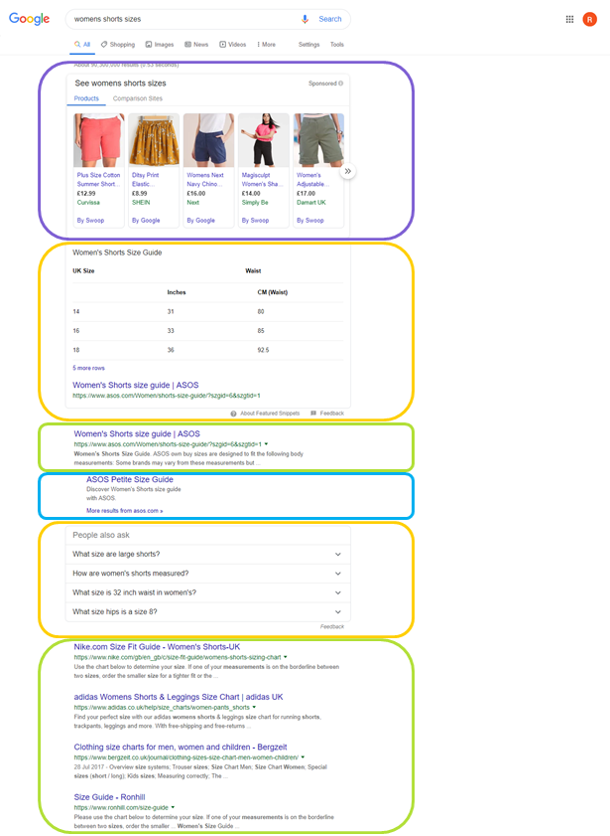
What are the names of the elements that appear in SERPs: Google’s guide
To avoid confusion and misunderstandings, Google has decided to release an official guide to the naming of the various visual elements that appear in its Search results pages, listing the 31 (for now) most common UI features and explaining how they appear, what they are called, and how you can optimize your website for each element.
As the document explains (from which all subsequent screens are taken), visual elements are the building blocks of the Google search results page that a user can perceive or interact with. Each search result has its own set of possible secondary visual elements, the appearance of various visual elements can change over time, and a given result may be displayed differently depending on the device used, the country in which the user is located, the language of the search query, and many other factors.
The elements we may come across are divided into:
- Text result: is a Google Search result based on the textual content of the page-it is the old and classic “blue link.”
- Rich result: is a result that typically relies on structured data in the page markup to display graphical elements or interactive experiences.
- Image result: is a result based on an image embedded in that web page; it most likely appears for image search queries.
- Video result: is a result based on a video embedded in that web page; appears most likely for video search queries.
- Exploration features: serve to help users expand and refine their initial search.
Going into more detail about this real anatomy of Google SERPs, we also find out what the main parts of the search engine page are called and what they look like. We have, therefore:
- Attribution: describes the origin of a search result and appears for various types of search results (text, video, images); includes various source identifiers, such as site name, favicon and URL (which consists of two parts, domain and breadcrumb).
- Text results: formerly known as “web result” or “normal blue link,” the guide says, is the classic result based on the textual content of the page indexed and ranked by the algorithms. It includes various visual elements-but, the Google document specifies, no text result includes all possible visual elements-such as:
- Attribution, the source information for the web page.
- Title link, the title of the search result shown in Google Search and other properties (News and Discover, for example).
- Snippet, the description or summary part of the search result on Google Search and other properties.
- Date when Google estimates that the web page was updated or published.
but can also show additional visual elements such as.
- A group of sitelinks, two or more links from the same domain or its variants grouped together under a text result.
- Text result image: is the most relevant image of that particular Web page for the specified query; by clicking on it, the user lands on the Web page that is embedding the image. It appears most likely in image search queries.
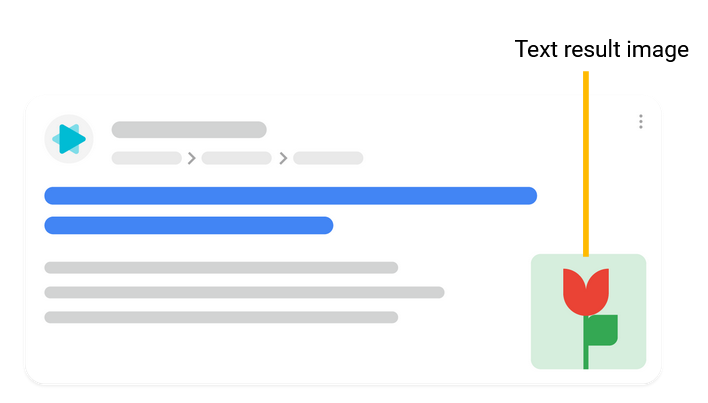
- Rich attributes: are one or more rows of additional information on the web page, such as review stars and recipe information, and are usually fed by structured data provided by the page itself.
- Host group: consists of two or more consecutive text results from the same site that are grouped together because they rank for the same query.
- Image results: are based on an image embedded in a web page and appear more likely to appear for image search queries. Visual elements present include:
- Attribution, which is the source information for the Web page that embeds the image.
- Thumbnail, which takes the user to the destination page.
- Video results: are based on a video embedded in a web page and are more likely to appear for video search queries. Among the visual elements present are:
- Video thumbnail, which takes the user to the page where the video is embedded.
- Title link for the video’s landing page.
- Attribution, with the source information for the video’s landing page.
- Upload date, as indicated in the relevant metadata.
- Exploration features, that help users explore more questions or searches related to their original search query (a feature also known as “People Also Ask”). While we can’t control what is displayed here, Google says, it can be useful to pay attention to related search queries when thinking about topics you might write about for our site. They take the form of:
- Related searches group, which reports precisely the searches related to the query made by other people; by tapping or clicking on a related search, the user is directed to another page of search results. These searches are automatically generated based on the initial query and other things people have searched for.
- Related questions group, which are questions related to what the user initially searched for (also known as “People also ask”); when a user expands the question, it displays a featured snippet.
How Google shows search results
Thus, Google supports many interesting elements related to appearance in search and can provide a rich set of features for the page in search results “if it understands the content of the page” and if it makes profitable and efficient use of structured data, which serves precisely offer additional information to the page code.
In general, we distinguish at least 6 macrocategories of functionality, namely:
- Normal blue link, shown with title link, URL and meta description snippet.
- Optimization, a refinement of normal or advanced results with different types of enhancements, including breadcrumbs, sitelink search boxes, company logos and more. Speaking of breadcrumbs, in Web language they represent the path that indicates a page’s position in a site’s hierarchy: as in the fairy tale of Tom Thumb, the user can go back up, crumb by crumb, to the various levels and categories of the site, navigating completely along the path traced by individual breadcrumbs. Google Search’s system uses breadcrumb markups in the body of a web page “to rank information from the page in search results” and to adjust content in the context of the Google Search query, because users can potentially reach a page from “very different types of search queries.”
- Advanced result, a result that contains graphical elements, such as review stars, thumbnail images, or some type of visual enhancement. These specific features are triggered based on the type of content on the page and communicated with the structured data, and are especially common when publishing a recipe, news story, or information about events, movies, or books, which can also generate a main news carousel, recipe carousel, or event listing. These multimedia results offer various types of summary information, especially in the case of searches for books, recipes, or products: searching for “To Kill a Mockingbird,” for example, generates a page where you can find page previews, reviews, short plot and story descriptions, and related searches, and then styles, images, and other features such as breadcrumbs and review snippets. Also called “extended search results” are certain types of results that Google defines as “more interactive and advanced class,” which include popups with engaging experiences or other advanced features for interaction. This category of actions is made possible through structured data and takes the form of extended searches or other properties: the image on the page describes the types of content and functionality available. The clearest examples are queries for job listings, recipes, or events, which provide the user with more complete and useful information.
- The informative tab is a knowledge panel tab that reports information from one or more pages, shown in an enhanced result with text, images, and links.
- Featured snippet is the snippet that presents an excerpt of the answer relevant to the user’s query.
- OneBox result is a direct response box from Google.
With this snippet, on the other hand, Google summarizes what additional information various sites might include on the page in order to get these enriched results-the display of which, however, remains at the discretion of the algorithm, which evaluates “the type of search device, location, and whether or not Google believes the feature provides the best search experience for the user.”
What is in Google’s SERPs today: list of features
And so, between Google Ads, People Also Ask, knowledge panels, main stories, and videos, the risk of getting lost (and missing links) is absolutely present: but what and how many features in Google SERPs may appear today, in 2022? We have counted about thirty of them (but on closer inspection there are many more, because some have different forms), and now we try to describe their main features and the cases that trigger them.
- Knowledge graph
The knowledge graph appears above the organic results or in the right sidebar from desktop, and often includes images, facts, maps, and related search topics. Typically, this SERP feature is shown for queries on certain topics, places, or people and displays information extracted from Google services (e.g., Maps) or external sources such as Wikipedia.
- Knowledge panel
Knowledge panels, more precisely fact sheets, are automatically generated boxes that contain useful semantic data, such as images, facts, social media links, and related searches, which typically appear on the right side of desktop search results. The information comes from various sources on the Internet, including human-modified sources such as WikiData, data extracted from the Google index, and private data partnerships.
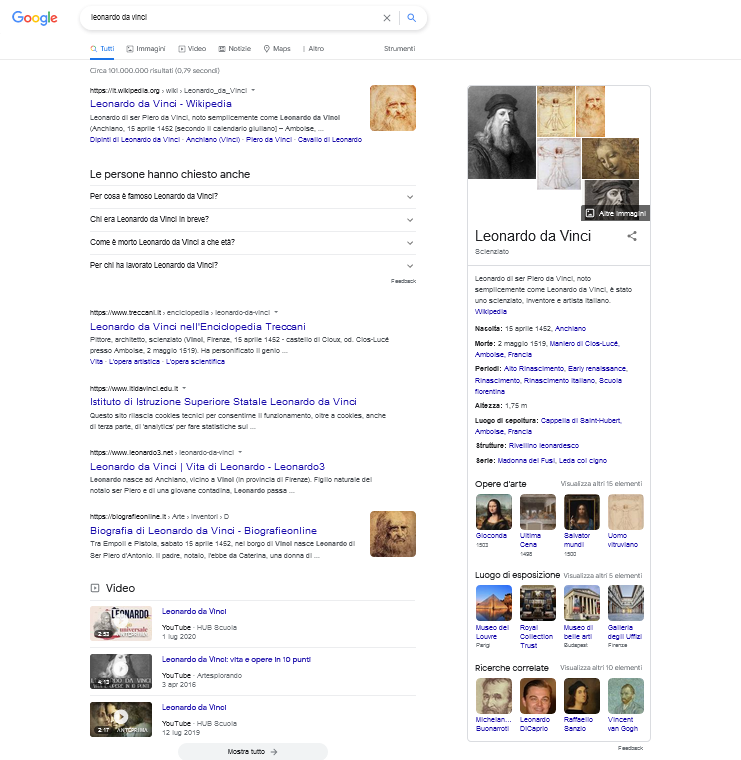
- Knowledge card
Knowledge cards are part of the Knowledge Graph and are made from information from a variety of sources, from semantic data from human-modified sources (such as WikiData) to data extracted from Google’s index to private data partnerships. They typically appear at the top of the SERP in a desktop search and contain precise answers to questions (even implicit ones) submitted by users, as in the example “population of Rome.” They differ from direct answers by the presence of the “more information” button, which links to the source, and they also influence the knowledge panel (e.g., in the one on Rome, the comparison with the population of other European capitals appears, which is absent in the generic panel).
- Local pack
The local pack is a feature that shows a map and a list of a few local businesses as multimedia results (typically 3), which is triggered for queries interpreted as pertaining to nearby businesses or organizations with strong commercial intent. With this pack, Google indicates in SERPs the three businesses with physical locations (no e-Commerce, then) deemed most relevant to the keyword, whose reviews, address and opening hours are indicated, as well as average rating and reviews.
- Sitelinks
Sitelinks are simply extra links from a specific domain that allow users to find specific content beyond the home page of that same site. They typically appear for navigational or branded searches and are used to navigate directly between popular pages on that site; usually the sitelink search box includes four or six links (up to a maximum of 10). Compared to other features, they bring benefits to the site because they allow for higher CTRs from SERPs and get users to the page they are looking for faster.
Recently, Google has also been experimenting with “nested results“, basically doubling the presence of a site in the SERP through a second link to a different but equally relevant page for the query, which, however, appears in precisely nested position relative to the first one placed.
Another form of sitelinks are multi-results related to queries that are answered in posts on forums et similia: in this case, Google lists several threads that deal with the topic and seem to be in topic with the query.
- People Also Ask
The People Also Ask section can appear anywhere on a SERP (increasingly also in a position interspersed with organic results), usually for a search query that is a direct question; it contains related questions to help users explore a topic further, and clicking on a question expands the answer, which thus resembles a featured snippet.
The answer also includes a link to the source for the answer, and in addition, each click on the box will automatically generate additional questions that continue the exploration of the topic.
For some queries, the presence of multiple “People also asked” boxes is possible (e.g., currently for [SEOZoom] there is one box in the above-the-fold position and another at the bottom, with more general searches on SEO).
- Related Searches
This feature often appears quite low in the SERPs, usually for generic intents that Google tries to direct to more specific paths.
- Featured Snippets
This is perhaps one of the most famous and frequent examples of additional functionality: it is a preview response to the user’s query that Google tracks among the pages collected in its index, highlighting inside a box a short content extracted precisely from the selected page (identified with a link) and placed before the organic results. In addition to a “classic” textual response, these snippets can also present numbered or bulleted lists or in table format.
This feature is triggered when Google wants to answer a question that is not in the basic Knowledge Graph (and is not of universal knowledge), and relies on what it considers the most likely and comprehensive answer. Featured snippets generally have higher CTRs than regular organic results.
- Direct Answers
Direct and instant answers are precisely a quick response to a question posed in the query (either directly or implicitly) that Google provides without referring to a Web site, simply showing the information at the top of the SERP.
Google calls them OneBoxes, defining them as results that have an embedded answer or tool in the search results.
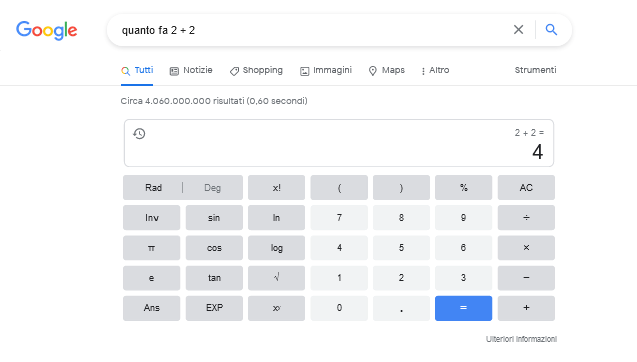
This function is activated when Google is certain of the answer to the question posed by the user, which precludes all other sites from getting traffic. Typically, direct answers involve “certain” information such as weather; statistics; mathematical functions; calculation of the number of days for specific dates; conversions (currency, weight, length etc.); time zones; definitions of vocabulary; age/height/employee or other verifiable data of a “famous” person; dates of popular events, such as conventions and festivals; display of current price and stock market summary for major stocks; translation of words or phrases; search for results of a sports game.
In addition, Google provides direct answers in the form of broad snippets or boxes for other queries as well, related to song lyrics, movie information, book information, tourist information, flight/hotel booking, job listings, all based on the structured data provided on the page.
- Reviews
Reviews are a type of rich snippet: it is a review/rating data system, showing the average rating based on stars (out of a maximum of five) and review count, placed between the target URL and the snippet for various types of results, such as products, recipes, and other relevant items. As in the other cases, the schema markup for reviews must exist on the page to be eligible and enable this feature.
- Images
Images packs are a block of images displayed on a horizontal row (or even multiple rows) that feature images that link to a Google Images search (and thus not to the sites from which the image itself came). Image packs can appear in any organic location, and recently, Google has begun grouping images within the knowledge panel for the recognized entity.
According to some estimates, nearly 23% of Google SERPs show images, and this figure continues to increase.
- Video
The presence of videos in Google SERPs is also much more frequent, and they are usually (inevitably) videos uploaded to YouTube, shown in various positions and forms within the page.
For example, there may be a block of videos before the organic results, but also a video result that intersperses the links-with opportunities also to take advantage of the “key moments” feature if properly enabled on the page; depending on the query, then, a large video preview and other related results may also appear as a list.
- Ads
Sponsored results from advertisers using Google Ads can be displayed at the top and bottom of SERPs.
Today, ads are also enriched, and can, for example, contain sitelinks to the site or additional functionalities.
- Commercial ads
In addition to standard text ads, Google also offers retailers the ability to create visual commercial ads for their products, which typically show the product name, price, retailer, and product rating.
- Top Products
This feature is activated for commercial searches, and unlike shopping ads, Google shows unadvertised products. In some cases, the carousel of commercial ads is moved to the right.
When you click on a product, more details about the product are displayed; in addition, Google shows reviews from third-party sites, prices from multiple retailers, top media insights, and reviews from multiple retailers.
- Carousels
Carousels are a list of similar content of varying numbers and generally appear at the top of SERPs, offering quick answers to the search query. They usually present a list of images in the form of small tabs: clicking on the individual image launches the related query and the SERP updates accordingly. Media results of the same type can be hosted on the site in the first position in SERP (with indication through structured data), or automatically generated by Google Search by retrieving information from different sites in the search results.
Among the most frequent content that generates carousels in Google Search are images, videos, products for purchase, and news stories in the Google News Carousel. A form of box carousel also appears when Google determines that a search intent may assume a user predisposed to click on a piece of media content: we are talking about the lists of image or video thumbnails that always appear before the classic 10 blue links, featuring resource previews and information about the site that published the video.
On the other hand, when the intent is deeply transactional, Google generates a shopping carousel in which there are sponsored ads or previews of products that fall under Google Shopping; this box is typically located at the top of the SERP, but sometimes (in desktop browsing) it can also be found as a list of products on the right side of the page.
- Top Stories
When the query is about news or current events – or if there is related news anyway, even about not the latest trend – Google might show a section of top news media. The Top Stories section used to be intended only for AMP pages, but since last year it has been open to all sites that fall within Google News parameters.Typically, it presents a series of articles, shown in a block with a preview image.
For the “hottest” topics, there is also an additional section, called “Other News” which reports on other articles and concludes with a button that links precisely to further insights, transferring the query (and the user) to Google News.
- Latest News from
For some searches related to news sources in Google News (e.g., newspapers or agencies), Google may show in SERP a box with 3 articles of interest recently published online, with scrolling options.
- Tweet
Google shows a carousel of Tweets for some specific queries-when searching for a personality/brand with an official profile, for example, or for topical issues.
The box can appear before organic results, but also in an interspersed position after a link and possibly other features.
- Podcasts
For very specific queries, such as [name + podcast ], Google prominently displays a carousel with typically 3 podcast results and ability to select additional episodes.
- Apps
Frequent especially for mobile searches, this feature shows the apps available on the Store related to the query entered.
- Product comparison
Currently, this feature no longer appears to be active, but until recently – as this Search Engine Journal article also noted – Google was capturing (and showing) information on specific products for users who wanted a comparison, with indications of reviews, price and additional details, as well as images of the items.
- Job Listings
Google helps job seekers by aggregating vacancies and proposals from various sources on the Web and displaying them within SERPs for queries such as [jobs near me] or [jobs + location].
It is an extension of Google Jobs Search and, in fact, by clicking on the box we are transferred to this Google platform.
- Academic Articles
Powered by Google Scholar, this feature is not very common and shows freely available online resources obtained from academic journals.
- Result search box
Sometimes, for navigational and branded queries Google allows an internal search within the placed site, with similar effect to searching with site:.
- Find results on
It is a box that appears for some searches, even general searches, and allows you to refine your search on some of the most reliable and relevant directories to display according to Google.
It also works for travel-related queries, such as flights or hotels, by transferring to specialized platform sites.
- Google Flights
For queries related to flight booking, Google shows a special box that aggregates results from all airlines via paid feeds.
- Google Hotel
For queries related to hotel booking, Google shows a special box that aggregates results from all hotel providers via paid feeds, which are shown in a divided section: on one side is the list of hotels (with thumbnail photos with average price, star rating and total reviews, and indication of services), and on the other side is the map with the location of the hotel and average price.
- Main attractions for
Also as part of Google Travel, for searches related to specific cities or places Google shows a box that takes you back to fact sheets on major attractions in the area (clicking on the tab lands you on the Travel platform), with a button that invites you to learn more about “other things to do” and tabs to filter your searches.
As the search engine itself explains, these results are sorted by popularity, based on the frequency of mentions on the Web and the proximity of the search location to the destination.
- Recipe Carousel
When Google identifies a specific intent for the query (even if only partial) it can show a box with carousel of recipes, linking back to Web pages positioned for the keyword and possibility to expand the search.
- See result for
This is not a very common feature and usually appears when Google is not 100 percent on the topic at hand or is pushing to drill down on a topic, placed on the right-hand side in close proximity to a knowledge panel (of which it is precisely a possible refinement of search intent). Most interestingly, clicking on these links does not produce exactly the same results as searching for the query.


